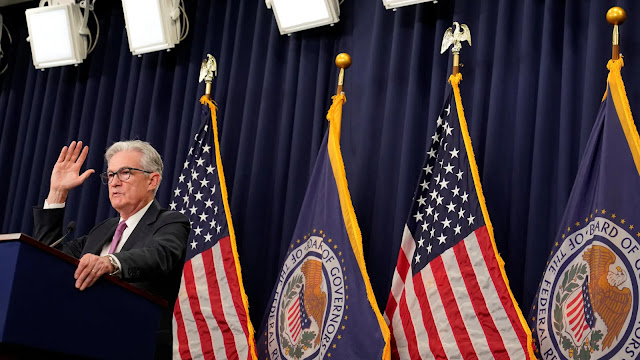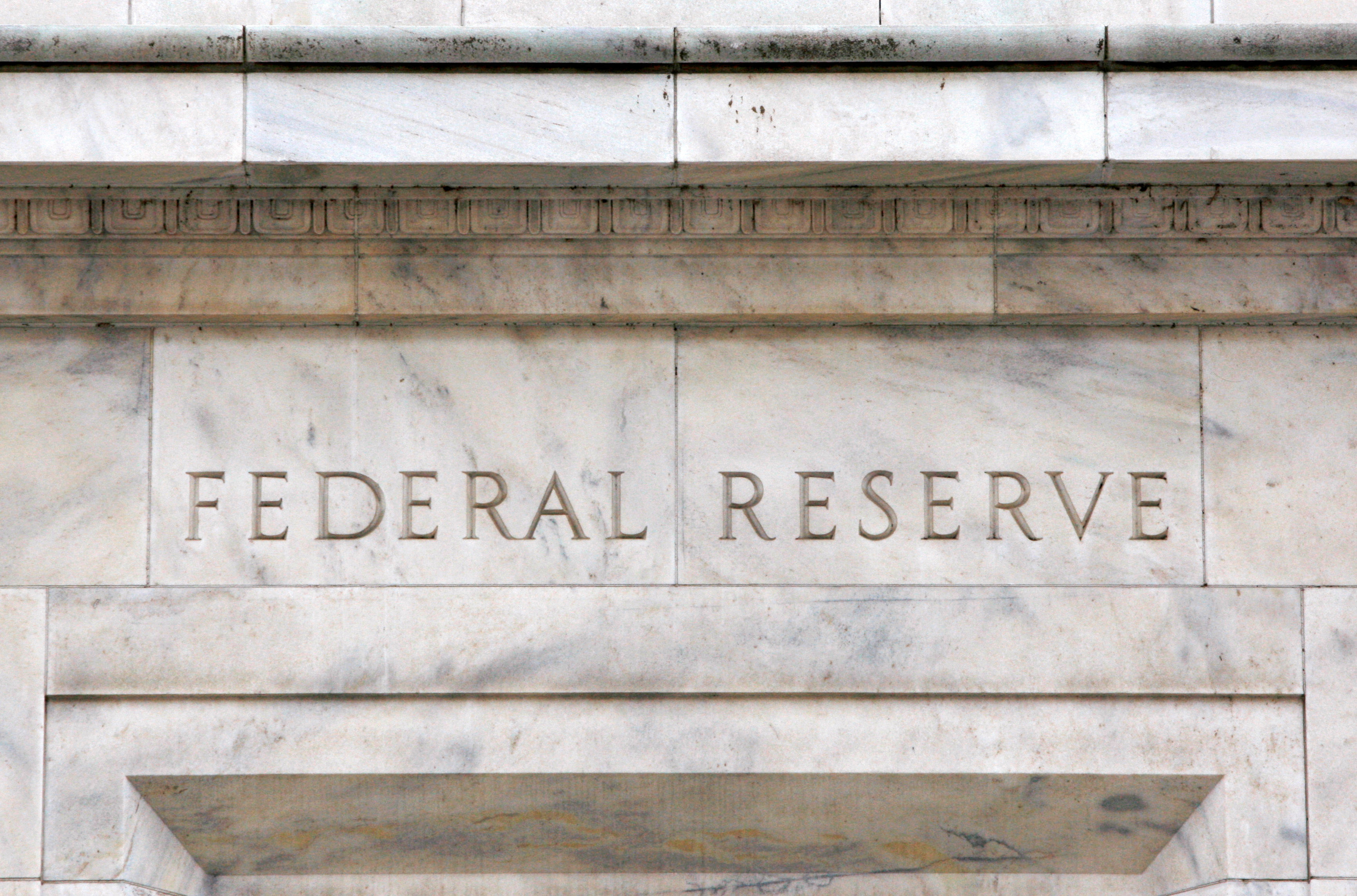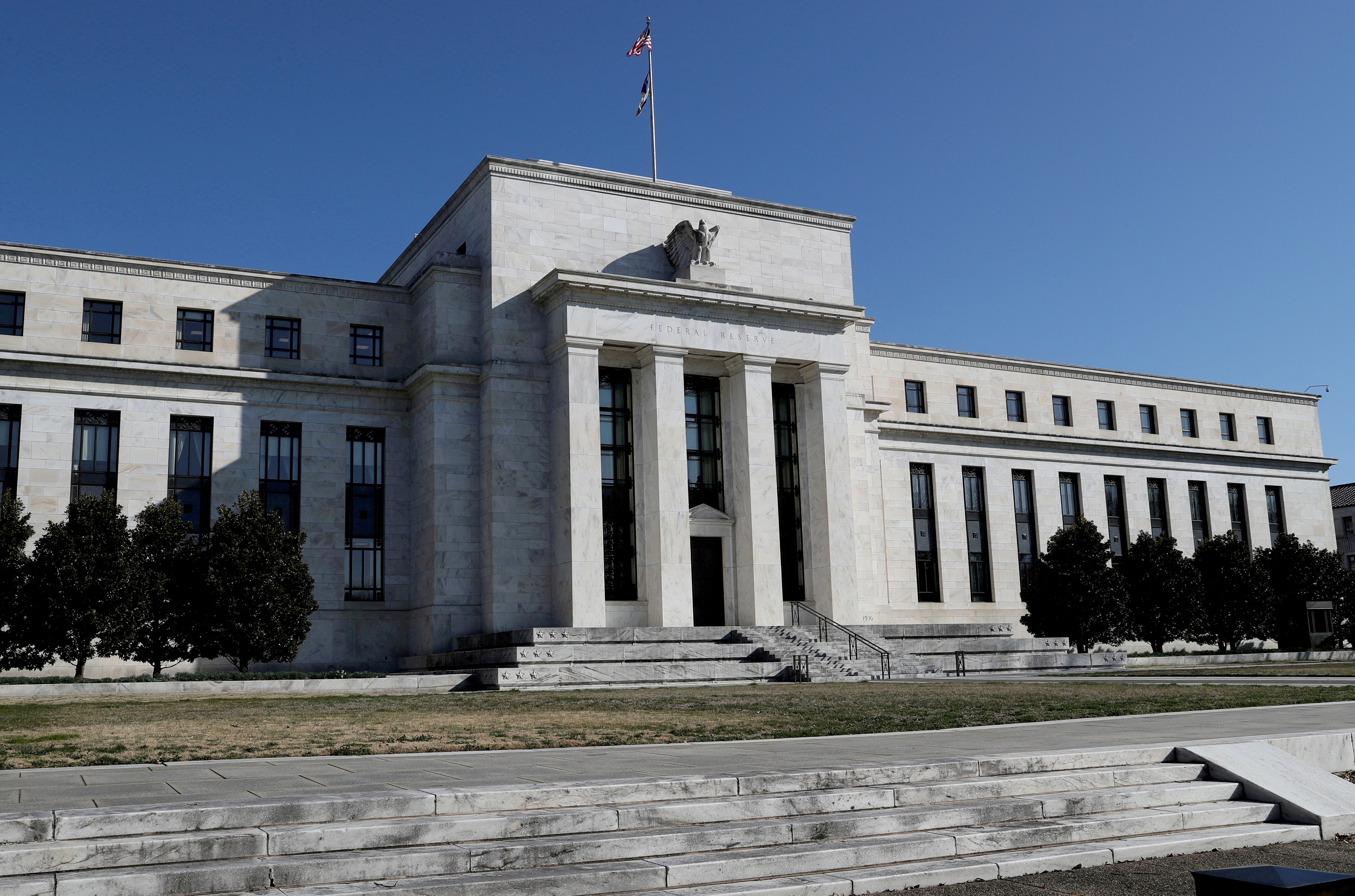(Reuters) - The Federal Reserve said on Wednesday it would not flinch in its battle against the most intense breakout of inflation in the United States since the 1980s even if that means a "sustained period" of economic weakness and a slowing jobs market.
As he explained the logic behind the stiffest interest rate increases in roughly four decades, Fed Chair Jerome Powell was peppered with questions about whether the U.S. economy was in or on the cusp of a recession - a notion he rejected because U.S. firms continue to hire in excess of 350,000 additional workers each month.
"I do not think the U.S. is currently in a recession," he told reporters after the end of the U.S. central bank's latest policy meeting, citing an unemployment rate that is still near a half-century low and solid wage growth and job gains. "It doesn't make sense that the U.S. would be in recession."
But the 75-basis-point rate increase announced by the Fed on Wednesday, coupled with earlier actions in March, May, and June, has now jacked the central bank's overnight interest rate from near zero to a level between 2.25% and 2.50%. That is the fastest tightening of monetary policy since former Fed Chair Paul Volcker battled double-digit inflation in the 1980s.
The cure then involved back-to-back recessions.

Consumer prices haven't yet breached the 10% annual mark this time - but at 9.1% they are close enough to raise the stakes for both the Fed and the Biden administration, which is particularly sensitive on the issue ahead of congressional elections in November.
While Powell said he did not think a recession would be needed to fix the problem this time, he acknowledged that the economy was slowing and would likely need to slow more for the Fed to bring the pace of price increases back to earth.
"We do want to see demand running below potential for a sustained period to create slack" in the economy, Powell said in a news conference. "We're trying to do just the right amount. We're not trying to have a recession."
But he was adamant that the behavior of inflation would drive the Fed's course, and that "another unusually large (rate) increase could be appropriate" when the Fed next meets if inflation does not begin to slow.
Powell, and many of his Fed colleagues, have been caught out this year making policy commitments based on data - particularly on inflation - that has surprised them in negative ways and forced them to adjust on the fly.
The Fed chief offered little specific guidance about what to expect next, a fact that puts a heavy focus on two months of upcoming data. The Fed's usual six-week interlude between policy meetings is eight weeks this time, providing what Powell called "quite a lot of data" to digest, including July and August inflation readings that will either show evidence of slowing price increases - or not.
"Restoring price stability is just something we have got to do," Powell said. "There isn't an option to fail."
When measured by the Fed's preferred gauge, inflation is running at more than three times the central bank's 2% target.
Fed officials are "acutely aware" of the hardship that inflation imposes on American households, particularly for those with limited means, Powell said, and they will not relent in their effort until presented with "compelling evidence" that inflation is coming down.
While jobs gains have remained "robust," officials noted in the new policy statement that "recent indicators of spending and production have softened," a nod to the fact that the aggressive rate hikes they have put in place since March are beginning to bite.
DATA-DEPENDENT
New data due to be released on Friday will show to what extent growth slowed in the second quarter.
Powell said some of the impact of Fed rate increases to date is still building in the economy, and depending on how inflation responds in the coming months that could allow the central bank to begin to slow the pace of rate increases.
The policy rate is now at the level most Fed officials feel has a neutral economic impact, in effect marking the end of pandemic-era efforts to encourage household and business spending with cheap money. The rate also matches the high point of the central bank's previous tightening cycle from late 2015 to late 2018, a level reached this time in the span of just four months.
Investors expect the Fed to raise its policy rate by at least half a percentage point at its Sept. 20-21 meeting.
"While another unusually large increase could be appropriate at our next meeting, that is a decision that will depend on the data we get between now and then," Powell said. "We will continue to make our decisions meeting by meeting, and communicate our thinking as clearly as possible."
Futures markets tied to Fed policy expectations tilted somewhat back toward a more moderate increase for the next meeting as Powell spoke on Wednesday.
In the U.S. Treasury market, which plays a key role in the transmission of Fed policy decisions into the real economy, yields on the 2-year note moved lower. The yield on the 10-year note was little changed.
Stocks on Wall Street added to broad gains in the session, with the S&P 500 index (.SPX) closing 2.6% higher, while the dollar (.DXY) weakened against a basket of major trading partners' currencies.
"From here, it is possible that the Fed slows its tightening pace, reassured by the likely peaking of inflation and pullback in inflation expectations as oil prices have fallen," Seema Shah, chief global strategist at Principal Global Investors, said in a note. "However, with the labor market still a picture of strength, wage growth still uncomfortably high, and core inflation set to decline at a glacially slow pace, the Fed certainly cannot stop tightening, nor can it downshift gears too much."
The U.S. government bond market is sending a fresh batch of signals that investors are increasingly convinced the Federal Reserve's aggressive actions to tame inflation will result in recession.
The shape of the yield curve, which plots the return on all Treasury securities, is seen as an indicator of the future state of health of the economy, as inversions of the curve have been a reliable sign of looming recession.
While Fed Chair Jerome Powell on Wednesday said that he does not see the economy currently in a recession, spreads between different pairings of Treasury securities - and derivatives tied to them - have in past weeks moved into or toward an "inversion" when the shorter-dated of the pair yields more than the longer one. These join another widely followed yield spread relationship - between 2- and 10-year notes - that has been in inversion for most of this month.
"Curves are flattening and some are negative. They're ultimately all telling you the same thing," said Eric Theoret, global macro strategist at Manulife Investment Management.
A steepening curve typically reflects expectations of stronger economic activity, higher inflation, and interest rates. A flattening curve can signal expectations of rate hikes in the near term and a weaker economic outlook.
The Fed is aiming to achieve a so-called "soft landing" that does not entail an outright contraction in U.S. economic output and the rise in joblessness that typically accompanies that. But the moves in the bond market over the past week show waning confidence in the Fed's ability to achieve so benign an outcome.
Some of those moves reversed slightly on Wednesday, with rates at the short end of the curve turning lower on expectations of the Fed being less likely to continue with super-sized hikes.
On Wednesday the Fed raised its benchmark overnight interest rate by 0.75% to a range of between 2.25% and 2.50% as it flagged weakening economic data. Powell said on Wednesday that achieving a soft landing for the economy was challenging.
The curve is indicating that the Fed will have to start cutting rates after hiking.
The part of the U.S. Treasury yield curve that compares yields on two-year Treasuries with yields on 10-year government bonds has been inverted for most of the past month and is around the most negative its been since 2000 on a closing price basis.
Powell, however, has in recent months said that the short-end of the yield curve was a more reliable warning of an upcoming recession.
"The first 18 months of the yield curve has 100% of the explanatory power of the yield curve, and it makes sense ... because if it's inverted that means the Fed is going to cut which means the economy is weak", he said in March.
Some analysts pointed to another measure, the differential between what money markets expect the three-month federal funds rate to be in 18 months and the current three-month federal funds rate. That went briefly into negative territory on Tuesday, said George Goncalves, head of U.S. Macro Strategy at MUFG.
That spread - measured through overnight indexed swap (OIS) rates, which reflect traders' expectations of the federal funds rate - was about 230 basis points in March.
"It's very similar to looking at the Treasury curve, these are all curves that trade with tiny spreads with each other," said Subadra Rajappa head of U.S. rates strategy at Societe Generale.
Another measurement of the curve, the 2-year forward rate for 3-month bills, is around the flattest since June 2021.
Fed economists have said that near-term forward yield spreads - namely the differential between the three-month Treasury yield and what the market expects that yield to be in 18 months - are more reliable predictors of a recession than the differential between long-maturity Treasury yields and their short-maturity counterparts.
That spread has not gone negative, though it has narrowed significantly from over 250 basis points in March to about 70 basis points this week, said MUFG's Goncalves.
Another part of the curve that compares the yield on three-month Treasury bills and 10-year notes has flattened dramatically over the past few weeks, from nearly 220 basis points in May to around 15 basis points this week although it steepened after Powell's remarks.
Separately, futures contracts tied to the Fed's policy rate showed this week that benchmark U.S. interest rates will peak in January 2023, earlier than the February reading they gave last week.
"Inverting yield curves, rising inflation, weakening housing data, and slumping surveys have all driven the increase (in recession probability) in the US," wrote Credit Suisse analysts in a research note on Tuesday, forecasting that the probability of the United States being in recession 6 and 12 months ahead is approximately 25%.
"It is likely recession probabilities rise further in the coming months if policy rate hikes cause further curve inversion and cyclical data continue to deteriorate," they added.




